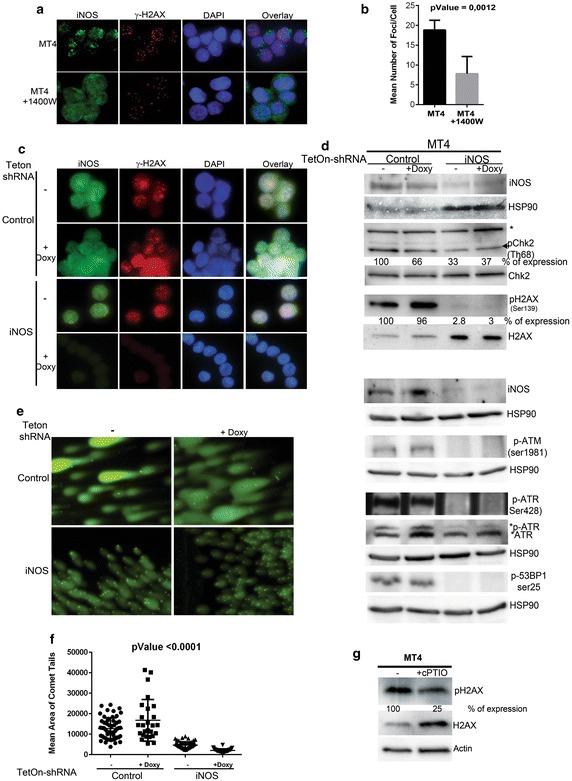Fig. 2.

iNOS inhibition is associated with a reduction of the DNA damage response. a Double immunofluorescence staining of MT4 cells treated with or without iNOS inhibitor, 1400 W (7 nM), for 48 h, using specific primary antibodies directed against iNOS, and γ-H2AX marker of DSBs and followed by secondary antibodies conjugated to Alexa fluor 488 (green for iNOS) and Alexa fluor 596 (red for γ-H2AX), respectively. DAPI dye was used to stain the nucleus of the analyzed cells. b The histograms represent an accurate estimation of the number of DSBs foci in MT4 cells and MT4 cells treated with iNOS inhibitor. c The same double immunofluorescence staining was also carried out on MT4 cells expressing doxycycline inducible TetOn control shRNA or MT4 inducible TetOn shRNA directed against iNOS mRNA. d MT4 cells that express inducible TetOn-shRNA control or shRNA specifically targeting the mRNA of iNOS were not induced or induced for 48 h with doxycycline and blotted for iNOS, p-H2AX, H2AX, pChk2, Chk2, p-ATM, p-ATR, p35BP1 and HSP90 as an internal control. Hsp90 blots are shown for each set of separately loaded cell lysates. * non-specific band. e Comet alkaline assay method that detects DNA breaks was used for evaluation of DNA damage in the same cells tested above. f The object count module was used to measure the area of comet tails (DNA migration), and calculate DNA damage parameters. At least 100 randomly selected cells were analyzed per sample. g Western blot on the extracts of MT4 cell untreated or treated with cPTIO (NO scavenger) using p-H2AX and total H2AX antibodies.
